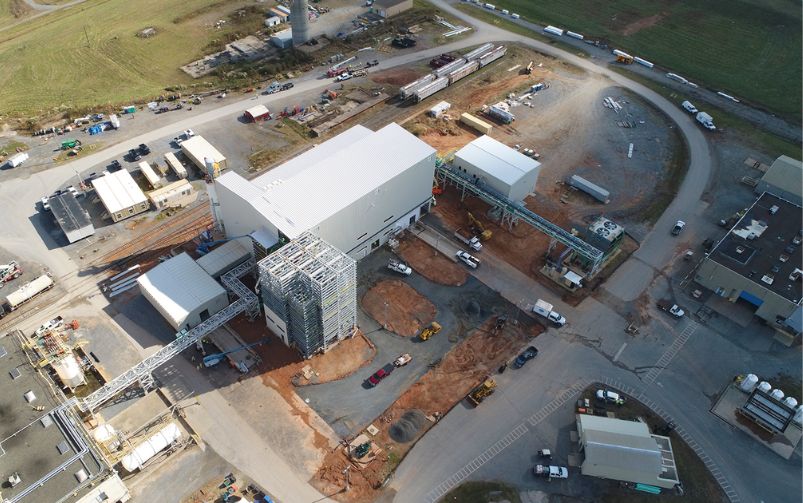Water sampling at Agnico Eagle’s Meliadine mine in Nunavut. Mathieu Dupuis, courtesy of Agnico Eagle Mines
When Barrick Gold Corporation published its 2022 Sustainability Report in April of this year, the United Nations (UN) sustainable development goals (SDGs) were front and centre. It was another recent example of mining companies turning to the SDGs to go above and beyond environmental, social and governance (ESG) frameworks and disclosures.
“By using the SDGs as the skeleton for our reporting, we are better able to apply an integrated and holistic approach to sustainability management, and to avoid a siloed-thinking and mere box-ticking approach that can be a consequence of taking an ESG-compliance-driven approach,” explained the Barrick report.
Established in 2015, the SDGs are 17 interrelated goals that present a blueprint to achieve a more equitable and sustainable future by 2030 through addressing global challenges related to poverty, climate change, inequality and more.
In April 2023, the UN declared that “just 12 per cent of the SDG targets are on track” and urged decisive action to correct the course and meet the 2030 deadline. Due to its impact on the environment and local economies worldwide, the mining industry can contribute to the achievement of, and even lead the way on, many of the goals, according to the UN.
While there is no SDG that explicitly refers to mining, the industry can use many of the goals to evolve its ESG reporting. According to Patrick Drouin, senior vice-president of investor relations and sustainability at Wheaton Precious Metals, which committed to supporting the SDGs in 2019, a significant benefit for mining companies of following the SDGs is that the goals help outline a holistic framework where companies can incorporate multiple SDGs and address multiple issues at once instead of using a one-by-one or piecemeal approach.
Agnico Eagle Mines is another company using the SDGs as part of its sustainability reporting. It first communicated its alignment with the goals in 2017. “We took the step to start aligning all of the work that we were doing that was contributing to the sustainability of communities and society with the framework set out by the UN SDGs,” said Melanie Plante, a sustainability performance and engagement manager at Agnico Eagle in an interview with CIM Magazine.
For Agnico Eagle, the goals provide a direction for its approach to sustainability and represent a common goal for the industry to work towards together. According to Plante, the SDGs are bigger than one company or the industry: they represent an opportunity for collective action to build a better future and provide concrete ways to contribute to that goal, as well as the inspiration to push further. “It requires us to look at how we tackle certain issues, and it pushes the boundaries of best practice,” Plante said. “It means every year we have to sort of level up what we do to go further.”
Agnico Eagle recently partnered with the Quebec government to use non-acid-generating tailings from its Goldex gold mine to rehabilitate the abandoned Manitou site in northwestern Quebec. The rehabilitation directly connects to SDG 6 and SDG 15, which respectively sets targets to ensure that water and sanitation are available and sustainably managed and to protect, restore and promote sustainable use of terrestrial and inland freshwater ecosystems.
Related: Mining companies are communicating with suppliers and customers about upstream and downstream emissions in attempts to meet emissions targets
More mining companies are following suit. Teck, for example, committed to aligning its sustainability strategy with the SDGs in 2022. One of its initiatives that contributes to the SDGs is its aim to become “nature positive by 2030” (an emerging framework focused on “[halting] and [reversing] the destruction of nature by 2030,” as described by the World Economic Forum). This framework will help Teck align with SDG 15, which is focused on sustainable land use. To meet this goal, Teck stated on its website that it plans to work with local partners, Indigenous peoples and communities to conserve ecologically and culturally significant lands. As an example of taking action, the company made a $10 million donation in June to Chile’s Protected Marine Areas Program with a focus on the Juan Fernández Archipelago, which is a UNESCO Biosphere Reserve and is “one of the most threatened ecosystems in the world.”
Mining companies not only have a responsibility to reduce environmental impacts and, according to the UN, ensure that when they “generate profits, employment and economic growth in low-income countries,” those benefits extend beyond the life of mine, but they may also find that existing organizational goals are already aligned with the SDGs. For example, mining for critical metals and minerals is needed for SDG 13 on climate action, which sets a target of achieving 40 to 45 per cent greenhouse gas emission (GHG) reductions below 2010 levels by 2030 and achieving net-zero GHG emissions by 2050. “If you’re going to hit climate action, you’re not going to do that without copper, lithium, cobalt,” Drouin told CIM Magazine.
Another area where the industry is aligned with the SDGs, Drouin said, is goal 10, which aims to reduce income inequalities. “To me, mining is the best way to transfer wealth from the more affluent urban areas into the rural areas that don’t get resources,” he said. “That’s where mining shines. You’re not going to put a silicon chip plant in rural Mexico, but [you’re going to put a mine there] if there’s gold. And that will bring economic benefit to that region [through] job creation, economic growth, community infrastructure and funding for social programs. All that is crucial.”
However, there are challenges when following the SDGs, which include measuring the impact of policies and practices, Drouin explained. “[The impact] is not always quantifiable, but you want to make sure that you’re getting the biggest benefit out of the efforts you’re putting in.” He said that the move towards an increased regulatory environment in some jurisdictions around the world may prevent miners from moving the dial forward on the goals.
There are also external challenges at play. Drouin said that while more permits and regulations that limit mining may give the illusion of protecting the environment, it comes at the trade-off of economic benefits that alleviate poverty and food insecurity and improve health and well-being and contribute more to the region. “Mining plays a crucial role, so it’s always concerning when you see increased regulatory permitting that causes roadblocks,” he said. “When done right, mining can tackle 16 of the 17 SDGs. And it does disturb the land. There’s no doubt. [But], you can do it responsibly and tackle everything else.”
While several mining companies are taking action, a 2020 report from the Responsible Mining Foundation, called “Mining and the SDGs: a 2020 status update,” stated that adoption across the mining industry needs to be higher to tackle the SDGs. The report, which reviewed 38 large-scale mining companies worldwide on their policies and practices, declared that systematic actions across the 17 SDGs were “largely lacking” and that “no one company is showing comprehensive actions to address all 17 SDGs.”
The report found four goals on which mining companies were taking the least action: SDG 3 on good health and well-being, SDG 5 on gender equality, SDG 6 on clean water and sanitation and SDG 14 on life below water. In addition, the report posited that while some companies strongly emphasize those goals as priorities, SDG 3 and 6 are “both among the most frequently prioritized SDGs, but show some of the weakest levels of action by mining companies.”
To reach the goals by 2030 and even beyond, the report stated that action must be the top priority. “[The goals] provide ambition, but if we don’t have action, it’s not going to make a difference,” Plante stated. “It’s great to say that we are aligned with the goals and we have targets in certain areas, but if we cannot demonstrate action, and if we’re not implementing initiatives on the ground, we’re never going to make steps towards those goals.”




